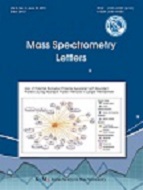
- P-ISSN 2233-4203
- E-ISSN 2093-8950

Molecular compositions of two types of heavy oil were studied using positive atmospheric pressure photoionization(APPI) Fourier transform ion cyclotron resonance mass spectrometry (FT-ICR MS). Vacuum gas oil (VGO) was generated fromvacuum distillation of atmospheric residual oil (AR), and slurry oil (SLO) was generated from catalytic cracking of AR. Theseheavy oils have similar boiling point ranges in the range of 210-650oC, but they showed different mass ranges and double-bondequivalent (DBE) distributions. Using DBE and carbon number distributions, aromatic ring distributions, and the extent of alkylside chains were estimated. In addition to the main aromatic hydrocarbon compounds, those containing sulfur, nitrogen, andoxygen heteroatoms were identified using simple sample preparation and ultra-high mass resolution FT-ICR MS analysis. VGOis primarily composed of mono- and di-aromatic hydrocarbons as well as sulfur-containing hydrocarbons, whereas SLO containedmainly polyaromatic hydrocarbons and sulfur-containing hydrocarbons. Both heavy oils contain polyaromatic nitrogen components. SLO inludes shorter aromatic alkyl side chains than VGO. This study demonstrates that APPI FT-ICR MS is useful formolecular composition characterization of petroleum heavy oils obtained from different refining processes.
Vendeuvre, C.. (2005). . J. Chromatography A, 1086, 21-.
Wang, F. C.. (2004). . J. Sep. Sci, 27, 468-.
Garcia, C. L.. (2002). . Anal. Chem, 74, 3849-.
Marshall, A. G.. (2002). . Int. J. Mass Spectrom, 215, 59-.
Mullins, O. C.. (2005). Asphaltenes, Heavy Oils, and Petroleomics, Chapter 3.
Rodgers, R. P.. (2005). . Anal. Chem, 78, 21A-.
Purcell, J. M.. (2006). . Anal. Chem, 78, 5906-.
Kim, Y. H.. (2010). . J. Am. Soc. Mass Spectrom, 21, 386-.
Hur, M. (2010). . Kim. S. Anal. Chem, 82, 211-.
Purcell, J. M.. (2007). . Energy & Fuels, 21, 2869-.
Bae, E.. (2010). S. Energy &Fuels 2010. Energy &Fuels, 24, 2563-.
Mapolelo, M. M. (2010). . Int. J. Mass Spectrom, 300, 149-.
Qian, K.. (2008). . Anal. Chem, 80, 849-.
Qian, K.. (2007). . G. Energy & Fuels, 21, 2869-.
Klein, G. C.. (2006). . Fuel, 85, 2071-.
Stanford, L.. (2006). . Energy & Fuels, 20, 1664-.
Klein, G. C.. (2006). . Fuel, 85, 2071-.
Miyabayashi, K. (2008). . Fuel Processing Technology, 89, 397-.
Purcell, J. M.. (2010). . Energy & Fuels, 24, 2257-.
McKenna, A. M.. (2009). . Energy & Fuels, 23, 2122-.
Qian, K.. (2010). . Anal. Chem, 82, 413-.
Pellegrin, V. (1983). . J. Chem. Educ, 60, 626-.